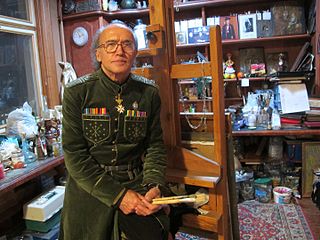The year 1963 was marked by many events that left an imprint on the history of Soviet and Russian fine arts.
The year 1988 was marked by many events that left an imprint on the history of Soviet and Russian Fine Arts.
The year 1926 was marked by many events that left an imprint on the history of Soviet and Russian fine arts.
The year 1929 was marked by many events that left an imprint on the history of Soviet and Russian Fine Arts.

Arts of Caucasian Albania – is the historical and regional type of arts related to Ancient East.
Nikolai Vasilyevich Rumyantsev was a Soviet author of several polemics on the history of Christianity, translator. He was also a member of the Soviet circle "Atheist" and the League of Militant Atheists. In the 1920s Rumyantsev was one of the leading proponents of the so-called mythological school in the Soviet academia. He authored such publications, as "The Pre-Christian Christ", "The Pagan Christs – the Ancient Precursors of Christianity", "The Apocalypse – The Revelation of John" and "Orthodox Holidays, Their Origin and Class Essence" (1936). "The Apocalypse – The Revelation of John" was published under the influence of Abram Ranovich. In that publication Rumyantsev, while not explicitly retracting his earlier opinions, offered a study of early Christianity which stressed not its derivation from supposed ancient mythology, but its intrinsic relation to revolutionary, messianic elements in contemporary Judaism.

Muhadin Ismailovich Kishev is a Circassian artist from Kabardino-Balkaria in the North Caucasus. His art is concerned with the confirmation of beauty and the medium of his paintings is usually oil on canvas or monotype on paper, with colour as the protagonist of his art. Kishev has exhibited his work in many countries apart from Russia including England, Spain and the United States. Currently he lives in Spain and divides his time between his Studios in Moscow, Nalchik and Los Canyos de Meca in Andalusia.
Ivan Anatolievich Shpitsberg, was a Russian and Soviet lawyer, journalist, writer, translator, organizer, and head of the scientific society and publishing house Atheist (1921), and editor of the eponymous magazine.
Vitaliy Alekseevich Shishakov, was a Russian popularizer of scientific knowledge, journalist, candidate of pedagogical sciences, and an honorary member of the All-Union Astronomical and Geodetic Society (1965).
Anton Loginov was a Russian Bolshevik Revolutionary, Communist Party member, journalist, writer, Soviet publicist, and propagandist of atheism.
Fedor Maksimovich Putintsev was a Soviet propagandist of atheism and a scientific worker in the study of problems of religion and atheism. He was also a journalist and writer.
Grigory Abramovich Gurev was a Soviet philosopher, popularizer of anti-religious knowledge, the author of several books on the history of religion and atheism.
Grigory Dementevich Kostomarov, was a Russian writer, participant of the Great October Socialist Revolution, Doktor Nauk in Historical Sciences, professor, head of the Department of CPSU History at the Academy of Social Sciences at the Central Committee of the CPSU, director of the Institute of CPSU History at the Moscow City Committee of the CPSU. He died in Moscow, was buried at the Novodevichy Cemetery. His wife is Zolotova-Kostomarova Maria Iosifovna, doctor, Doktor Nauk in Medical Sciences, professor. His son is Vitaly Grigorievich Kostomarov.
The IZh-18 (ИЖ-18) is a single-shot, break-action shotgun.
The MTs 111 is a Soviet and Russian double-barreled high-quality custom hunting shotgun.
Anatoly Vasilyevich Belov was a Soviet religion scholar and atheist propagandist. He was a First Deputy Chairman of the Council for Religious Affairs under the Council of Ministers of the USSR, an expert on Adventism and one of the authors of the Atheistic Dictionary and Atheist Handbook.
Maria Sidorovna Butinova, née Dolgonosova, was a Soviet and Russian ethnographer, historian, and religious scholar. As a doctor of historical sciences, she was a specialist in the field of religion of Oceania.
Alexander Dmitrievich Dmitrev was a Soviet historian, researcher of popular movements in the Roman Empire, religious scholar, Doctor of Historical Sciences, and professor.

Vladimir Kapitonovich Nikolsky was a Soviet historian, ethnologist, translator, religious scholar, Doctor of Historical Sciences (1943), and professor.

Valery Andreevich Mishin is a Soviet and Russian painter, graphic artist, poet and writer.





